Starry Sky |
|||||||||||||||||||
 |
 |
||||||||||||||||||
Knitted sweater for women, men and children in DROPS Karisma. Piece is worked with Nordic star pattern and can be worked with round or zippered neck. Women’s size S – L. Men’s size S – XL. Children’s size 2 – 14 years.
DROPS 59-9 |
|||||||||||||||||||
|
------------------------------------------------------- START THE PIECE WOMEN AND MEN: ------------------------------------------------------- EXPLANATION FOR THE PATTERN WOMEN AND MEN: PATTERN: See diagrams M.1 to M.2. The whole pattern is worked in stocking stitch. RIB: * knit 2 / purl 2 *. Repeat from *-*. GARTER STITCH (back and forth): Knit all rows. 1 ridge = 2 rows knit. ------------------------------------------------------- Body: Numbers in ( ) = men's sizes. Cast on 240-264-288 (264-288-312) sts on smaller circular needles with coal gray; join and place a marker at the join. Knit 6 cm rib. Change to larger circular needles and knit stockinette st. When the work measures 25-28-30 (31-33-36) cm , knit Pattern 1, centering the pattern across the front and back. Place a second marker at the other side. At the same time, when the work measures 35-38-40 (42-44-47) cm , inc 5 sts at each side (these sts are for the steeks and are not knit into the pattern). After Pattern 1, knit stockinette st with coal gray again. Sweater with zippered neck: When the work measures 41-44-47 (49-52-56) cm (approx. 19 cm of the work remains), knit the next row as follows: 5 steek sts, 60-66-72 (66-72-78) sts for the front, bind off 1 st for neck, 59-65-71 (65-71-77) sts for the front, 5 steek sts, 120-132-144 (132-144-156) sts for the back. Continue knitting back and forth. When the work measures 55-58-61 (63-66-70) cm , bind off at each center front neck edge every other row: 9-10-10 (10-10-11) sts 1 time, 3 sts 1 time, 2 sts 2 times, 1 st 3 times - (the shoulders will have different numbers of sts -- left shoulder = 41-46-52 (46-52-57) sts, right shoulder = 40-45-51 (45-51-56) sts). When the work measures 57-60-63 (65-68-72) cm , knit Pattern 2 to finished dimensions (place Pattern 2 directly over Pattern 1). At the same time, when the work measures 58-61-64 (66-69-73) cm . Sweater with round neck: When the work measures approx. 55-58-61 (63-66-70) cm , bind off the center front 24-24-26 (28-28-30) sts for the neck and knit the rest back and forth on the needles. Bind off at each neck edge every other row: 3 sts 1 time, 2 sts 2 times, 1 st 3 times. At the same time, when the work measures 57-60-63 (65-68-72) cm , knit Pattern 2 to finished dimensions. At the same time, when the work measures 58-60-62 (65-68-72) cm , bind off the center back 40-40-42 (44-44-46) sts for the neck. Bind off 2 sts at each neck edge on the next row. Bind off after Pattern 2 - the work measures approx. 60-63-66 (68-71-75) cm . Sleeves: Cast on 56-60-60 (60-64-64) sts on smaller double pointed needles with coal gray; join and place a marker at the join. Knit 6 cm rib. Change to larger double pointed needles and knit stockinette st. After the rib, inc 1 st each side of marker 27-25-27 (27-27-30) times: Sizes Women's S+M + Men's XL: alternately every 4th and 5th row Size Women's L: every 4th row Sizes Men's S/M + M/L: every 5th row = 110-110-114 (114-118-124) sts. When the work measures 47-46-44 (50-51-51) cm , knit Pattern 2 to finished dimensions = 50-49-47 (53-54-54) cm . Now knit 2 cm reverse stockinette st for a seam allowance over the cut edge on the body, bind off. Assembly: Sweater with zippered neck: Sew a marker thread down into the center of the steek sts on each side. Sew two machine seams around the marker threads, first seam = 1/2 sts from the thread, 2nd seam = 1/2 sts from the first seam. Cut up for armhole. Sew shoulder seams. Pick up approx. 134-146 sts (divisible by 4 sts + 2 sts) around the neck on smaller double pointed needles with coal gray and knit back and forth on the needles (from the right side): P 1 row, K 1 row, then 8 cm rib as follows: K 2 (edge sts kept in garter st throughout), * K 2, P 2 *, repeat from * - * until 4 sts remain, K 2, K 2 (edge sts kept in garter st throughout). Bind off loosely in rib. Make zipper pockets: pick up approx. 40-46 sts on smaller double pointed needles with coal gray along the left side of the neck split and neck ribbing inside the outer 2 sts and knit 3 rows stockinette st, bind off. Repeat along the right side of the split. Sew the zipper in. Sew the bottom of the split together. Sew the sleeves to the body from the right side as follows: Sew alternately a st in the last row of knitting on the sleeve before the seam allowance and a st on the body after the machine seam. Turn the sweater inside out and sew the seam allowance from the sleeve over the cut edge on the body by hand. ------------------------------------------------------- START THE PIECE CHILDREN: ------------------------------------------------------- EXPLANATION FOR THE PATTERN CHILDREN: PATTERN: See diagrams M.1 to M.2. The whole pattern is worked in stocking stitch. RIB: * knit 2 / purl 2 *. Repeat from *-*. ------------------------------------------------------- Body: Cast on 162-174-192-204 (216-228-240) sts on smaller circular needles with coal gray; join and place a marker at the join. Knit 4-4-5-5 (5-6-6) cm rib. Change to larger circular needles and knit stockinette st with coal gray. Place a second marker for the other side - front and back each have 81-87-96-102 (108-114-120) sts. When the work measures 17-20-22-25 (25-25-26) cm , knit Pattern 1 - start at the appropriate arrow on the chart and knit pattern across the front, start at the arrow again and knit across the back. At the same time, when the work measures 27-28-30-33 (34-35-37) cm , bind off 4 sts on each side (2 sts each side of each marker). On the next row, inc 5 sts on each side over the bound-off sts (these sts are for the steeks and are not knit into the pattern). Dec for armholes inside the 5 steek sts on every row: 1 st 2-2-2-2 (4-4-3) times, then every other row: 1 st 2-2-2-3 (3-3-3) times - front and back each have 69-75-84-88 (90-96-104) sts + 5 steek sts at each side. After Pattern 1 is complete, knit stockinette st with coal gray again. When the work measures 37-41-44-48 (50-52-55) cm , bind off the center front 15-21-22-24 (24-26-26) sts for the neck and knit the rest back and forth on the needles. Bind off at each neck edge every other row: 3 sts 1 time, 2 sts 2 times, 1 st 2 times. At the same time, when the work measures 38-42-45-50 (52-54-57) cm , knit Pattern 2 to finished dimensions. When the work measures 39-43-46-51 (53-55-58) cm , bind off the center back 29-35-36-38 (38-40-40) sts for the neck. Bind off 2 sts at each back neck edge on the next row. Bind off after Pattern 2 - the work measures approx. 41-45-48-53 (55-57-60) cm . Sleeves: Cast on 44-44-48-48 (52-52-56) sts on smaller double pointed needles with coal gray; join and place a marker at the join. Knit 4-4-5-5 (5-6-6) cm rib. Change to larger double pointed needles and knit stockinette st. After the rib, inc 1 st each side of marker 9-15-16-20 (20-22-23) times: Size 2 years: every 6th row Sizes 3/4 + 5/6 + 7/8 + 11/12 years: every 4th row Sizes 9/10 + 13/14 years: alternately every 4th and 5th row = 62-74-80-88 (92-96-102) sts. When the work measures 23-26-29-33 (37-39-43) cm , put 2 sts each side of marker on a stitch holder. Then put sts on a stitch holder for sleeve caps each side every other row: 3-3-3-4 (3-4-4) sts 7-7-7-7 (8-8-8) times. Put all the sts on the stitch holder back on the needles and knit Pattern 2 over all sts to finished dimensions = 31-34-37-41 (46-48-52) cm reverse stockinette st for a seam allowance over the cut edge on the body, bind off. Assembly: Sew a marker thread down into the center of the steek sts on each side. Sew two machine seams around the marker threads, first seam = 1/2 stitch from the thread, 2nd seam = 1/2 stitch from the first seam. Cut up for armhole. Sew shoulder seams. Pick up approx. 92-96-100-104 (108-112-116) sts (divisible by 4 sts) around the neck on smaller double pointed needles with coal gray; join and knit as follows (from the right side): P 1 row, K 1 row, then 8 cm rib. Bind off loosely in rib. Fold the edge over against the wrong side and sew. Sew the sleeves to the body from the right side as follows: Sew alternately a st in the last row of knitting on the sleeve before the seam allowance and a st on the body after the machine seam. Turn the sweater inside out and sew the seam allowance from the sleeve over the cut edge on the body by hand. |
|||||||||||||||||||
Diagram explanations |
|||||||||||||||||||
|
|||||||||||||||||||
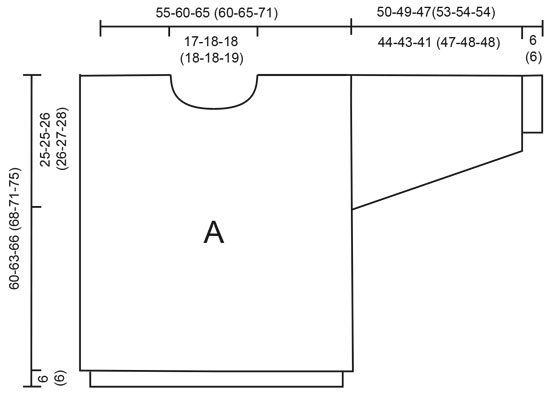
|
|||||||||||||||||||
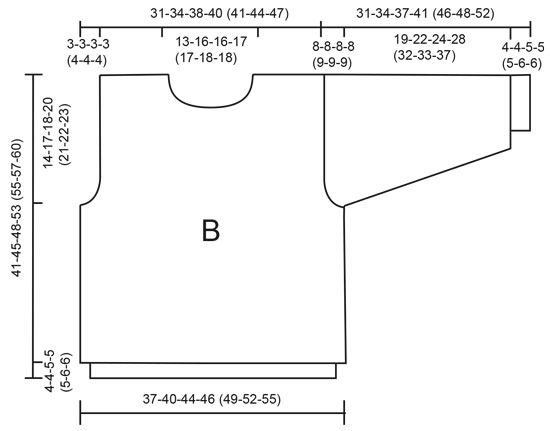
|
|||||||||||||||||||
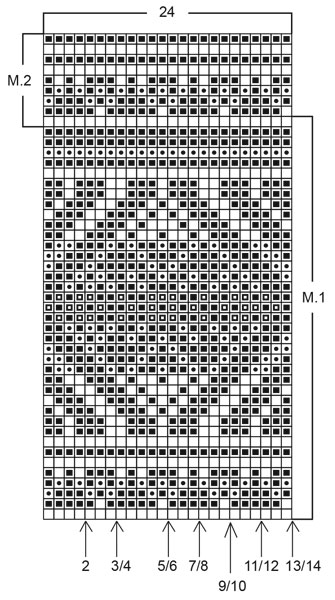
|
|||||||||||||||||||
|
Have you made this or any other of our designs? Tag your pictures in social media with #dropsdesign so we can see them! Do you need help with this pattern?You'll find tutorial videos, a Comments/Questions area and more by visiting the pattern on garnstudio.com. © 1982-2024 DROPS Design A/S. We reserve all rights. This document, including all its sub-sections, has copyrights. Read more about what you can do with our patterns at the bottom of each pattern on our site. |
|||||||||||||||||||



















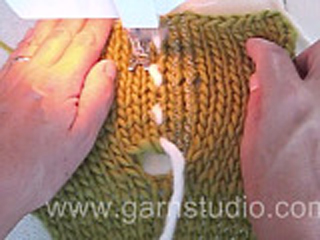























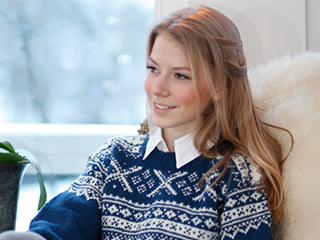




















Comments / Questions (27)
Guten Tag, ich möchte den Pullover gerne ab dem Ärmelausschnitt in Hin- und Rückreihen stricken und nicht am Ärmel aufschneiden. Wie gehe ich genau vor? Wann muss ich wie für den Ärmel abketten?
11.02.2024 - 16:31DROPS Design answered:
Liebe Frau Waller, dann teilen Sie die Arbeit in 2 Teilen dann stricken Sie Vorder- und Rückenteil separat in Hin- und Rückreihen, bei der 1. Reihe nehmen Sie für die Naht 1 Masche beidseitig zu. Viel Spaß beim stricken!
12.02.2024 - 09:00Bonjour, Pour le pull avec coll zippé en taille XL, pour les manches à la fin on a 124 mailles. Mais comment faire pour tricoter M2 alors que ce n'est pas un multiple de 6 ? Merci
20.12.2023 - 19:20DROPS Design answered:
Bonjour Marianne, vous pouvez centrer un motif de M.2 au milieu du dessus de la manche (cf cette leçon ainsi les deux manches seront identiques, même si le motif ne tombe pas juste au milieu sous la manche. Bon tricot!
21.12.2023 - 08:12Hvordan tas det opp masker på innsiden av splitten?
07.11.2023 - 17:02DROPS Design answered:
Hei Kirsti. Bruke en strikkepinne (evnt. en en heklenål) og strikk opp masker på innsiden av splitten. Se evnt hjelpevideo nederst på siden. Vises ikke fra innsiden, men samme teknikk kan brukes. mvh DROPS Design
13.11.2023 - 09:59Die erste Frage ist damit beantwortet, vielen Dank dafür. Aber meine anderen Fragen sind leider noch offen: - wird das Bündchen beidseitig dann nach innen geklappt? - wie wird der Reißverschluss drangenäht? Mit Steppstichen? Oder unsichtbar von hinten an die Bündchen? Ich kann es leider nicht in der Anleitung finden und auf dem einzigen Foto auch nicht erkennen und bin für jede Hilfe dankbar.
13.10.2023 - 15:55DROPS Design answered:
Liebe Renate, die Reißverschluss-Blende (= 3 Reihen glatt rechts) wird direkt an den Schlitz des Pullovers angestrickt und wird nicht umgeklappt. Den Reißverschluss nähen Sie an der Rückseite der 3 glatt rechten Reihen an, am besten im Steppstich mit der Strickwolle. Gutes Gelingen!
16.10.2023 - 09:30Nochmal die konkreten Fragen: Wozu ist das Bündchen rechts und links vom Reißverschluss? Wird das nach innen geklappt und somit „unsichtbar“? Wie wird der Reißverschluss an das Bündchen bzw. Schlitz mit den Bündchen angenäht? Für Hilfe wäre ich sehr dankbar.
13.10.2023 - 13:02DROPS Design answered:
Liebe Renate, man strickt 3 Reihen glatt rechts an jeder Seite von Reissverschluss damit der Schlitz schöner aussieht. Viel Spaßb eim stricken!
13.10.2023 - 15:30Ich habe den Rumpf dieses tollen Pullis in Herrengröße S/M fertig gestrickt, in Hin-und Rückreihen mit Schlitz für den Reißverschluss. Nun will ich den Halsausschnitt fertigstellen, die Anleitung für den Kragen verstehe ich, aber dann ist noch die linke und rechte Seite des Reißverschlusses mit einem Bündchen zu stricken. Ich verstehe nun nicht, wie der Reißverschluss an das Bündchen (3 R glatt rechts) angenäht wird. Das wird nicht explizit erwähnt, oder? Danke für Ihre Hilfe!
03.10.2023 - 16:381. Was passiert mit den anderen Farbfäden bei Unterbrechung des Musters an den Steek-Maschen? Müssen die hinter den 5 Maschen mitgeführt werden? Das sieht man ihm Anleitungsvideo leider nicht. 2. Wenn die Mustermitte auch die vordere Mitte sein soll, dann muss ich das Muster am Reihenanfang an einer anderen Stelle beginnen. Das ist im M1-Diagramm aber nur für die Kindergrößen eingezeichnet. Ich muss mir das für die Herrengröße M/L selbst ausrechnen. Hab ich das richtig verstanden?
29.08.2023 - 17:09DROPS Design answered:
Liebe Renate, alle Farben können mit den Steek-Maschen gestrickt werden, entweder in Streifen (wie in diesem Video oder abwechslungsweise. M.1 muss in der Mitte zentriert werden, diese Lektion kann Ihnen damit helfen. Viel Spaß beim stricken!
30.08.2023 - 07:58This pattern is so appealing that after having made the sweater for my 10-year-old grandson I am now making it for his father. I would like to make the round-neck version. However, I notice that there are no finishing instructions for the adult round neck version for the ribbing that finishes the neck as there are in the instructions for the child sweater. Please advise. Perhaps someone else has asked this question but I couldn't read the other language comments. Thanks!
29.07.2023 - 19:03DROPS Design answered:
Dear Laurel Von Gerichten, for round neck pick stitches divisible by 4 and knit 2K/2P rib in round as described. Happy knitting!
29.07.2023 - 21:28Hva med de 5 oppklippsmasker? I oppskriften det står sånn : når arbeidet måler 47 cm økes det 5 m i hvert side ( disse m er til å klippe opp i etterpå og strikkes ikke inn i monsteret) Skal de 5 oppklippsmasker strikkes hele veien til genseren er ferdig eller skal det strikkes etter bredde på armen. I min tilfelle armen har 22 cm .. så skal jeg felle over det 5 masker når jeg har strikket "armhulen " eller skal dem følge arbeidet videre ?
29.11.2022 - 06:18DROPS Design answered:
Hej Andreea, hvis du følger opskriften, så skal du fortsætte med de 5 opklipsmasker i hver side, da det er dem du skal klippe i bagefter :)
30.11.2022 - 15:29Hvorfor kan man ikke bare dele arbejdet,over brystet efter mønsteret,så man ikke skal klippe op
25.11.2022 - 20:46DROPS Design answered:
Hej Joan, Det må du gerne gøre :)
30.11.2022 - 14:09